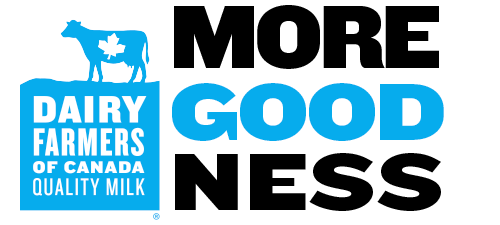Chances are that if you’ve experienced tummy troubles or intestinal discomfort you’ve been advised by friends, family, or social media to avoid milk products because of the lactose they contain. But when it comes to lactose intolerance, there’s a lot of misunderstanding, especially as it is often confused with milk allergy. Let’s take stock of the facts.
What is lactose?
Lactose is a natural sugar found in milk and certain milk products. In order for your body to absorb and use lactose for energy, it needs to be broken down with the help of an enzyme known as lactase that is produced in your small intestine.
What is lactose intolerance?
Lactose intolerance is not an allergy, but rather the result of the body’s inability to fully digest lactose. People with lactose intolerance don’t produce enough of the lactase enzyme in their digestive system to digest large amounts of lactose all at once.
As a result, undigested lactose gets into the large intestine, where it is fermented by the intestinal flora. This fermentation can cause symptoms such as gas, bloating, and cramps when large amounts of lactose are consumed all at once. While this fermentation is harmless, it can sometimes lead to bothersome symptoms for some people.
Do people with lactose intolerance have to avoid milk completely?
No! The good news is that the majority of people with lactose intolerance can continue to enjoy milk and milk products every day without experiencing the digestive discomfort associated with this condition.
In fact, the National Institutes of Health (NIH) in the United States specifically recommends that people with lactose intolerance not avoid milk and milk products because almost everyone can tolerate a certain amount, and those who do avoid milk products are at risk of developing a calcium or vitamin D deficiency.(1)
Furthermore, a large number of carefully conducted studies show that the majority of people living with lactose intolerance can continue to enjoy the nutritional benefits of dairy products without experiencing undesirable symptoms. You simply have to find your own personal tolerance threshold.
Fun fact: The bacteria in fermented dairy products like yogurt, cheese, and kefir breaks down some of the lactose in these foods, making them easier for people with lactose intolerance to tolerate.
8 tips for managing lactose intolerance
If you have been diagnosed with lactose intolerance by your doctor, you don’t have to avoid dairy products and deprive yourself of the health benefits they provide. The following tips will help you determine your level of tolerance to lactose and will allow you to continue to enjoy dairy foods.
- Enjoy milk in small portions throughout the day instead of drinking a large glass all at once. That way you won’t exceed your digestive system’s tolerance threshold.
- If you’ve been avoiding milk, you can reintroduce it into your diet, by starting with small amounts (less than 125 mL), then gradually increasing your intake over the course of a few weeks.
- Drink milk with a meal or with other food to slow down digestion and facilitate the absorption of the lactose in your intestine.
- Eat yogurt or drink kefir. They contain good bacteria that help the body digest lactose, making them more easy for people with lactose intolerance to tolerate.
- Opt for ripened cheeses such as Cheddar, Brie, Parmesan, and Swiss. They contain almost no lactose at all! You’ll love these Fish and cheddar tacos, this Beet Carpaccio with Parmesan, and this Grilled Swiss cheese sandwich with asparagus.
- Use milk products in recipes – let yourself be inspired by these ideas:
- Start the day with a delicious muesli recipe made with yogurt and milk, like this Peach, strawberry, and almond muesli.
- Pair your favourite pasta with a creamy milk-based sauce like in this recipe for Super-fast tortellini with vegetables.
- Prepare the rice or quinoa you cook for supper in milk like in this recipe for Sesame ginger veggie quinoa with salmon.
- Top your sandwiches with melted cheese like in this Open-faced creamy avocado turkey melt.
- Take lactose enzyme drops or tablets before consuming dairy products (they’re available in pharmacies).
- Try lactose-free milk products; you can easily find lactose-free milk, yogurt, and cheese in the grocery store (look for the “lactose-free” mention on the label).
Good to know: Milk is more than lactose; it’s a source of 15 essential nutrients. A single cup (250 ml) gives you more protein than a large egg, as much calcium as 8 cups (2 litres) of raw broccoli, as much potassium as a medium-size banana, and almost half the vitamin B12 you need daily.
Having tummy troubles?
If you’re experiencing gastrointestinal discomfort, it’s important to consult your doctor in order to identify the real source of your troubles. This can help you obtain a proper diagnosis, and find a strategy best suited to your situation. Your symptoms might not be due to lactose intolerance.
Sources
1. National Institutes of Health. NIH Consensus Development Conference Statement: Lactose Intolerance and Health. NIH Consens State Sci Statements 2010;27(2).









